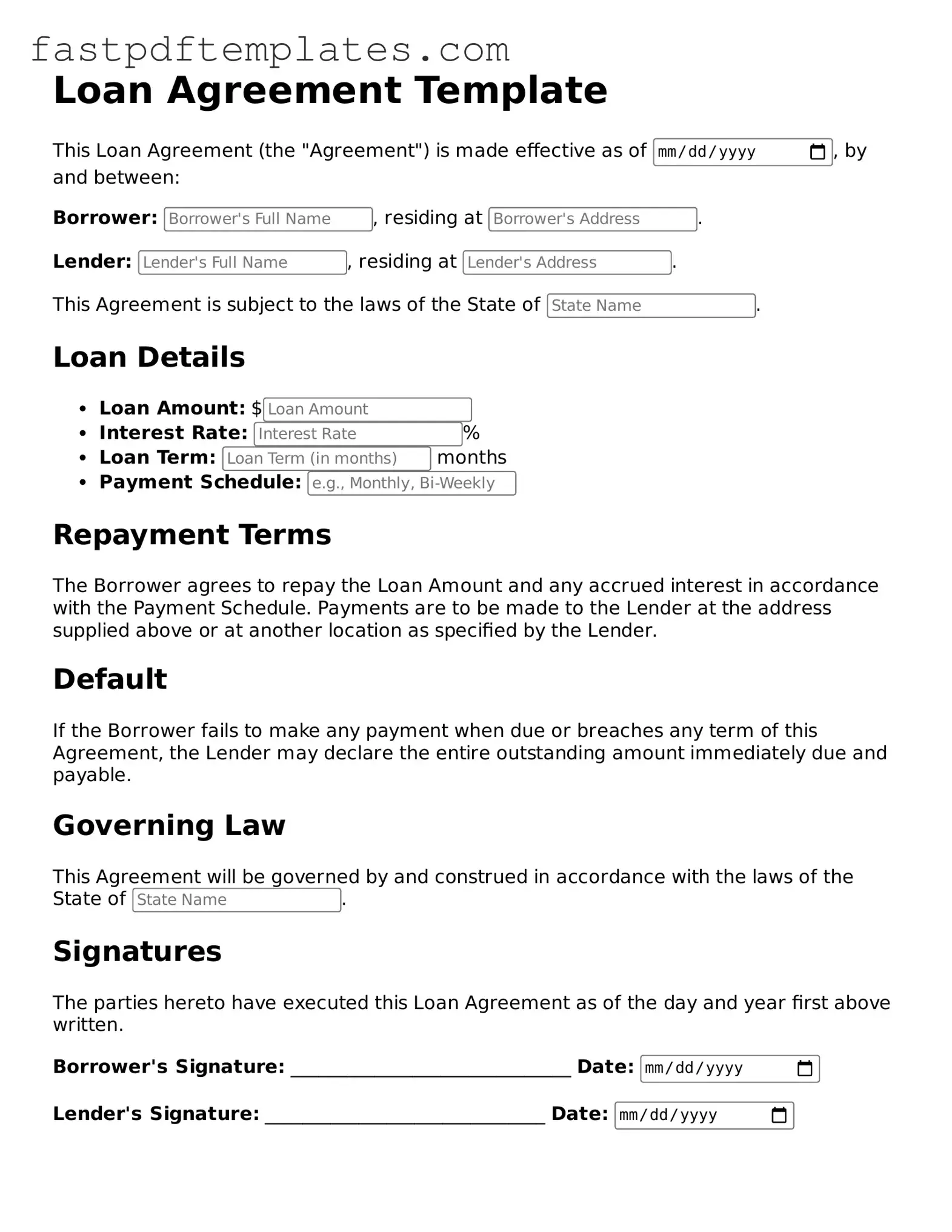A promissory note is a financial document in which one party promises to pay a specified amount to another party under agreed-upon terms. Similar to a loan agreement, it outlines the amount borrowed, interest rates, and repayment schedules. However, a promissory note is typically simpler and may not include the detailed terms and conditions found in a full loan agreement. It serves as a basic acknowledgment of the debt and is often used for personal loans between individuals.
A mortgage agreement is another document that shares similarities with a loan agreement. This type of agreement specifically pertains to real estate transactions, where the borrower uses property as collateral for the loan. Like a loan agreement, it details the amount borrowed, interest rates, and repayment terms. However, it also includes specific clauses related to the property, such as what happens in the event of foreclosure or default.
A credit agreement is a document that outlines the terms of a credit facility, such as a line of credit. It is similar to a loan agreement in that it specifies the amount of credit available, interest rates, and repayment terms. However, credit agreements often allow for more flexibility in borrowing, as borrowers can draw on the credit line as needed, rather than receiving a lump sum upfront.
An installment agreement is a document that allows a borrower to repay a debt in fixed payments over time. Like a loan agreement, it details the total amount owed and the payment schedule. The key difference is that installment agreements are often used for settling debts with creditors, allowing borrowers to pay off amounts owed in manageable chunks rather than in one lump sum.
A lease agreement, while primarily used for rental situations, shares similarities with loan agreements in that it outlines the terms of a financial obligation. It specifies the amount to be paid, payment frequency, and duration of the agreement. In both cases, the document serves to protect the interests of both parties and ensure clarity regarding financial responsibilities.
A partnership agreement can resemble a loan agreement when one partner lends money to another for business purposes. This document outlines the terms of the loan, including the amount, interest rate, and repayment schedule, similar to a loan agreement. The difference lies in the context; partnership agreements also address the roles and responsibilities of each partner in the business.
An investment agreement is a document that outlines the terms under which one party invests money into another party’s business or project. Like a loan agreement, it includes details about the amount of money involved and the expected returns. However, investment agreements often focus on equity stakes and profit-sharing, rather than strict repayment terms.
A forbearance agreement is a document that allows a borrower to temporarily postpone or reduce payments on a loan. It is similar to a loan agreement in that it modifies the original terms of the loan. This type of agreement is often used when borrowers face financial difficulties, providing them with temporary relief while still outlining how the loan will be managed moving forward.
A security agreement is a document that establishes a lender's right to take specific collateral if a borrower defaults on a loan. It shares similarities with a loan agreement by detailing the terms of the loan, including the amount borrowed and repayment terms. However, the security agreement specifically focuses on the collateral aspect, providing legal protection for the lender in case of default.
